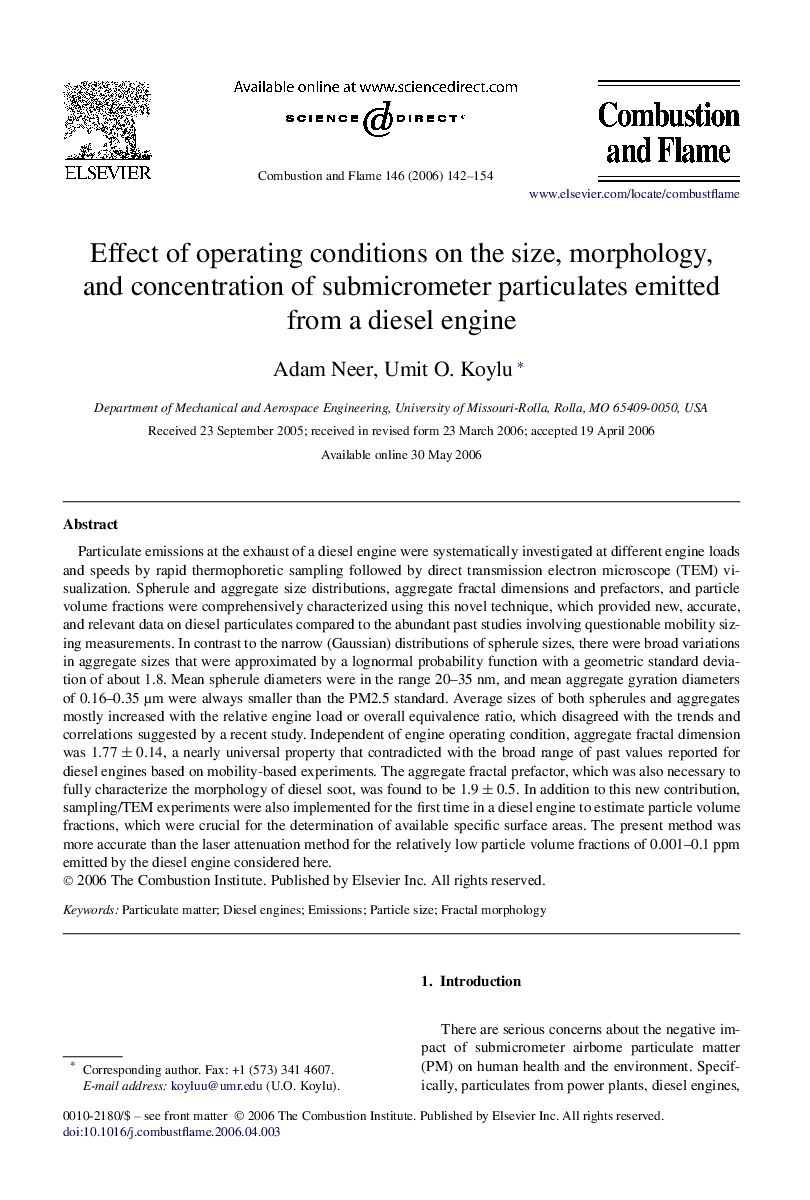| Article ID | Journal | Published Year | Pages | File Type |
|---|---|---|---|---|
| 169910 | Combustion and Flame | 2006 | 13 Pages |
Particulate emissions at the exhaust of a diesel engine were systematically investigated at different engine loads and speeds by rapid thermophoretic sampling followed by direct transmission electron microscope (TEM) visualization. Spherule and aggregate size distributions, aggregate fractal dimensions and prefactors, and particle volume fractions were comprehensively characterized using this novel technique, which provided new, accurate, and relevant data on diesel particulates compared to the abundant past studies involving questionable mobility sizing measurements. In contrast to the narrow (Gaussian) distributions of spherule sizes, there were broad variations in aggregate sizes that were approximated by a lognormal probability function with a geometric standard deviation of about 1.8. Mean spherule diameters were in the range 20–35 nm, and mean aggregate gyration diameters of 0.16–0.35 μm were always smaller than the PM2.5 standard. Average sizes of both spherules and aggregates mostly increased with the relative engine load or overall equivalence ratio, which disagreed with the trends and correlations suggested by a recent study. Independent of engine operating condition, aggregate fractal dimension was 1.77±0.141.77±0.14, a nearly universal property that contradicted with the broad range of past values reported for diesel engines based on mobility-based experiments. The aggregate fractal prefactor, which was also necessary to fully characterize the morphology of diesel soot, was found to be 1.9±0.51.9±0.5. In addition to this new contribution, sampling/TEM experiments were also implemented for the first time in a diesel engine to estimate particle volume fractions, which were crucial for the determination of available specific surface areas. The present method was more accurate than the laser attenuation method for the relatively low particle volume fractions of 0.001–0.1 ppm emitted by the diesel engine considered here.
